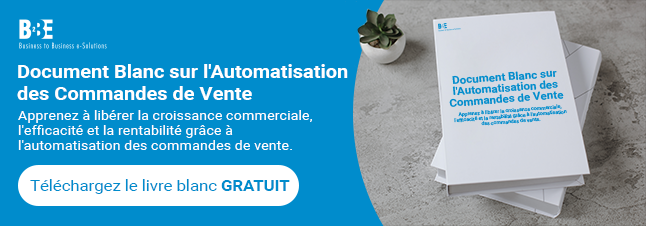In this article, we answer some frequently asked questions about automated orders.
What is an automated order system?
The term “automated order system” refers to a computer network that transfers instructions to an appointed order turnaround system. Automated orders is a hosted solution in which no software is required allowing companies to take sales orders sent to your organization via email.
Automated trading systems have the space to perform with speed and accuracy. This is done by removing human intervention in of the order-handling process, through using these systems it can lower the number of errors. Automated sales orders are also used to identify issues and to be more responsive to your clients and are also able to provide another layer of security against fraud, thereby helping to control this risk too.
There are so many questions around automated orders and what this entails, so let us answer some of the more popular ones.
What is automated sales order recognition?
Sales order recognition are sales orders sent to the system as PDF’s and throughout this process, the sales order data is recorded to create an electronic file, this is similar to EDI based files.
As part of the data capture process, the software learns so the level of automation can incrementally improve to ensure the files can be created automatically first time, every time.
What is sales order processing?
Sales order processing is the sequence of actions that a business follows to complete a customer purchase. The files are read electronically, then they are matched against the details of the sales quote. This then generates a transaction file for automatic importation into the finance or ERP system.
As it is done automatically, sales order processing is assisted by technology, therefore, ensuring that each touchpoint (billing, production, logistics) has the right information that is required to execute an order effectively.
What is an automated sales order creation?
B2BE automated orders functionality creates electronic data interchange files once they have been through the process without error. The sales orders can be uploaded and managed in the same way as an EDI sales order.
By combining the EDI products with the automated order’s product, this means your organizations will be handled through all sales orders no matter how the client desires.
What is sales order processing in ERP?
The information is processed through the ERP order management solution and order entry is then created. As soon as the sales order is generated, resource allocation begins to acquire raw material from the inventory stock.
The order reaches the production stage and is well-led through an ERP solution until the end of the assembly line.
This begins a chain of automated events to allow order process monitoring and control, every department in the organization is then notified about the order so that they can accumulatively work in real-time to process the order.
What does order processing mean?
Order processing is the process/workflow associated with the picking, packing and delivery of packed items ready for sending to the shipping carrier and is the key element of order fulfilment.
This order fulfilment process or the operational procedures of DC’s are determined by varying factors. Every DC has its own unique requirements and priorities and there is no “one size fits all” process that provides the most efficient operation. Factors that determine the process of flow at a distribution centre are the nature of the shipped product, the nature of the orders and the shipping costs.
Increase visibility and reporting
The automated orders product is a fully hosted product that is accessed through the B2Be’s web portal online interface. Providing up to date information for customer service teams and other functionality such as dashboard analytics tools which is used to measure throughput accuracy and other major metrics in real-time.
Benefits of Automated Orders:
- Faster Processing: through the removal of paperwork, you can successfully accelerate order processing, by doing this those who benefit are customer service and sales reps. Therefore, meaning that sales order processing applications extract important data from paper, email and faxed orders and are automatically entered directly into your system.
- Inventory Management: with sales order processing your system will assign stock to fulfil an order. The system can identify issues quickly and minimize returns and order cancellations. The system can also be viewed to benefit the security and standards of the supply chain and can be seen in real-time, whilst also giving insight so that you can modify and make contingency plans for any future interruptions.
- Improved Accuracy: minimizing or eradicating the human interaction this results in higher accuracy as the automation reduces the potential for error. Few sales order systems using automatic processing can extract information without manual intervention. A system only needs to log customer data once, as it can pull all information required.
- Greater Agility: using automation for sales order processing gives sellers greater visibility into the whole sales cycle. Through this, the order fulfilment cycle can be monitored and measure performance using various data points. This technology enables sellers to create personalized discounts for customers, offering a competitive advantage, through this system you can also amend or correct order and real-time visibility into orders.
What is a sales order entry / what is an order entry system?
A sales order entry procedure ensures prompt and accurate shipments through efficient and organized order processing, it applies to all personnel involved in the processing of sales orders, especially in sales, customer service, credit, manufacturing and billing are the actions needed to record a customers order into a companies order handling system. Once this information has been inputted, it is typically reclassified internally as a sales order – the order entry function is usually the responsibility of the sales and marketing function.
What is order management in the supply chain?
The sales order management system helps to control the process between a customer placing an order and a product going out for delivery.
The order management system is an electronic system developed to execute securities orders in an efficient and cost-effective manner. The systems file orders for various types of securities and can maintain and track the process of each order throughout the system.
What is the difference between the sales order and invoice?
A common question asked a lot online. Sales orders and invoices are an integral part of any business transactions, sales order and invoices are two commercial documents helping to identify the buyers and sellers name as well as details of products that are purchased.
A sales order confirms the details of customer purchase and the invoice is the bill specifying money due and the terms. A seller creates a sales order in the purchase process, that is agreed upon by both parties. An invoice comes later in the process.
The invoice also assists as proof of purchase and could be needed to document business expenses for tax purposes or warranty purposes.
What comes first sales order or purchase order / what is the difference between sales order and purchase order?
A sales order is the first step in the processing of an order and the invoice is the last step in the completion of a deal. The sales order is issued by a seller when the buyer has assured the purchase of products.
Once the sales orders have been generated the sellers do everything to fulfil the order. In this process, regarding sales orders and invoices, an invoice is not issued unless a sales order has been processed.
In simple terms, a purchase order is a document used for ordering goods and a sales order is a document used for confirmation of the sale.
What is the difference between a sales order and a purchase order?
These terms many think to sound very similar, they are different as of who generates them and their main purpose.
The difference is a purchase order is an order issued by the buyer to the seller and lists the type, quantity and specifics of goods or services – it is also referred to as a customer order.
Whereas, a sales order is one a seller issues and confirms the sale after the acceptance of the seller’s price quote by the buyer. The order this works is sales order first and once the purchase is considered legally binding there is no need for further negotiation.
What has automated error and issue identification?
This is something unique to the B2BE Sales Order Automation solution and is the automated validation against your product catalogue. The product and price catalogue can be uploaded into the B2BE environment automatically and as a sales order, these are processed through the system and can be consequently validated based on the value of configurable rules which guarantees the client’s purchase order data is accurate.
In any circumstance the data is inaccurate the customer service team will be alerted and they can access the rectification interface and take the appropriate measures to rectify the sales order or reject it back to the initiator.
Conclusion
We hope this has given an insight into Automated Orders, explaining the basic definitions and answering some of the frequent questions posed to B2BE. Want to find out more? Get in touch now via our social media platforms or our contact page. You can also learn more about B2BE’s Sales Order Automation solution.
À propos de B2BE
B2BE fournit des solutions électroniques pour la chaîne d'approvisionnement à l'échelle mondiale, aidant les organisations à mieux gérer leurs processus de chaîne d'approvisionnement, en fournissant des niveaux plus élevés de visibilité, d'auditabilité et de contrôle. Nous sommes animés par une passion pour ce que nous faisons, inspirés par l'innovation et soutenus par une richesse de connaissances. Avec plus de 20 ans d'expérience, les équipes de B2BE opèrent dans le monde entier.
Pour plus d'informations, visitez le site www.b2be.com.


